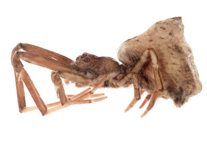Abstract
Boucardicus Fischer-Piette & Bedoucha, 1965 is considered to be a very diverse group of the land caenogastropods endemic to Madagascar and consisting 197 recognized species and 5 subspecies. Except two species described by Edgar Albert Smith (1892, 1893), all these taxa were introduced by Édouard Fischer-Piette and Kenneth Emberton with coauthors, mainly since 1993 (Fischer-Piette & Bedoucha, 1965; Fischer-Piette et al., 1993; Emberton, 1994, 1998, 2002, 2009; Emberton & Pearce, 1999; Emberton et al., 2010). Fischer-Piette & Bedoucha (1965) placed 6 species in Boucardicus, the snails with conic shell, mainly moderately small (height and width are about 10 mm in type species). They also established one more new genus with a single new species—Madecataulus Fischer-Piette & Bedoucha, 1965, of the moderately small snails with fusiform shell (height about 10 mm, width—5 mm). Two more new species were placed in Madecataulus later (Fischer-Piette et al., 1993, Emberton, 1994), but this genus was rejected and united with Boucardicus by Emberton & Pearce (1999). At the same time since 1999 several minute snails with pupilloid-like shell (height 1.5–3.5 mm) and mostly with specific apertural structures were placed in Boucardicus together with much larger snails that are quite different also in the shape of shell and structure of aperture (Emberton & Pearce, 1999; Emberton, 2002; Emberton et al., 2010). Two new species related to these Boucardicus pupilloid-like forms were revealed recently during our studies and described here—B. monchenkoi sp. nov. and B. ambindaensis sp. nov.

